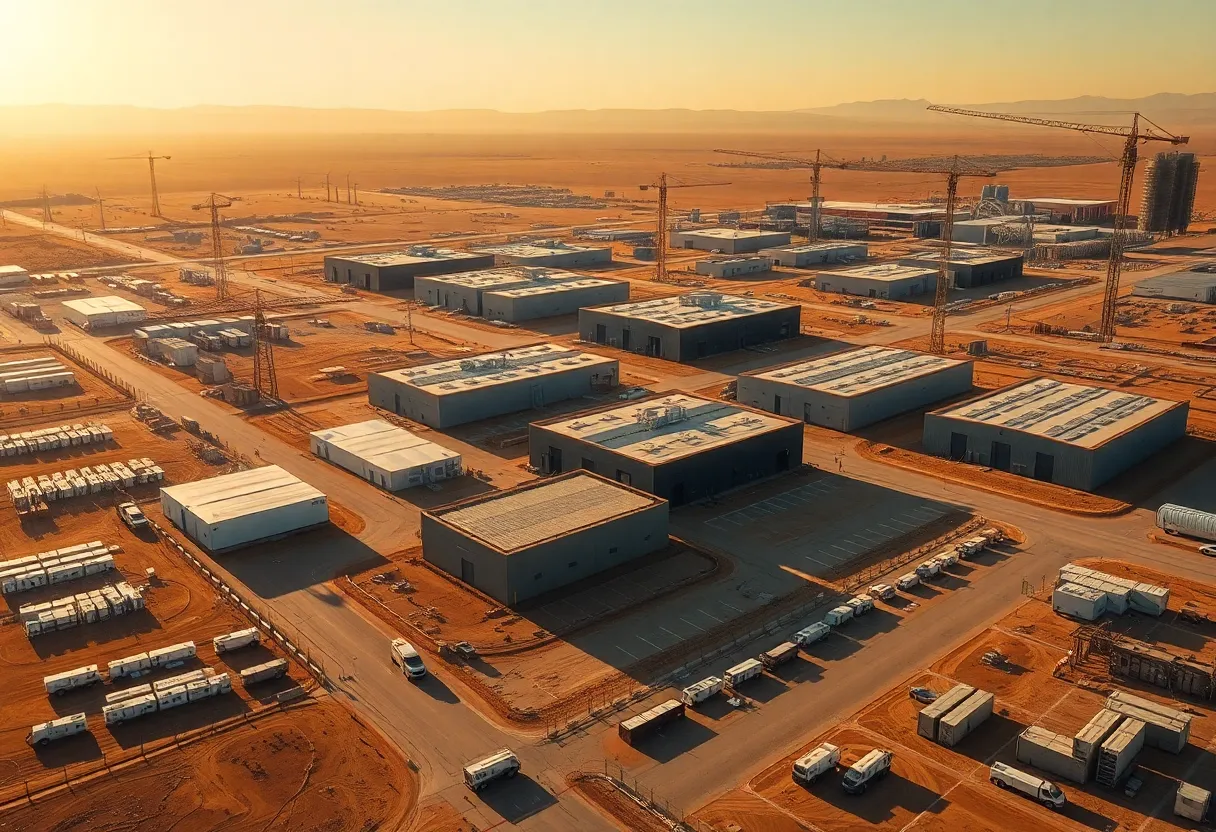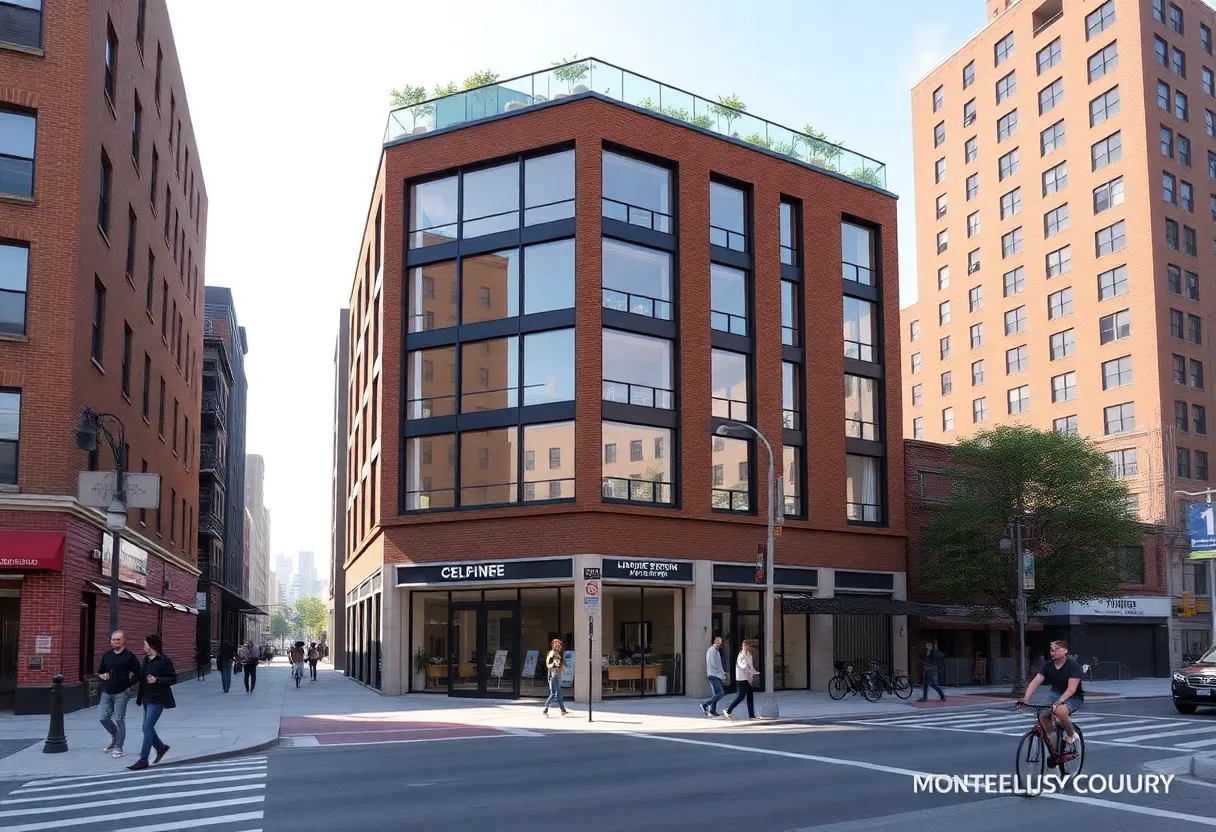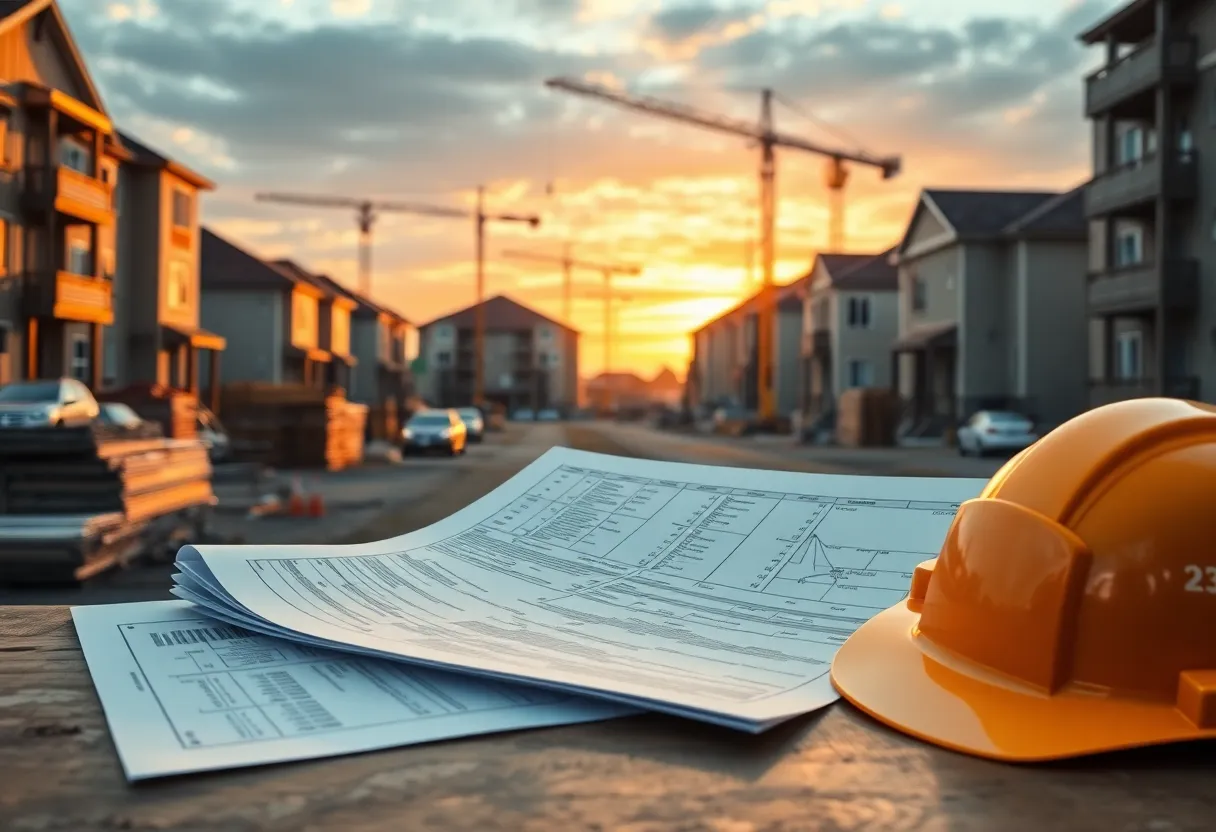Phoenix metro, Arizona, September 1, 2025
News Summary
The Phoenix metro has surged to the top of U.S. industrial markets, driven by a wave of mission-critical facilities — semiconductors, data centers, EV battery plants and large distribution centers. Strong public and private investment, fast-tracked permitting, expanded utilities and targeted workforce training accelerated development. Nearly $932 million in industrial sales and one of the nation’s highest average sale prices highlight strong demand, while a multi-million-square-foot construction pipeline strains power, water, housing and labor. Contractors are adopting BIM, drone surveying and modular prefabrication, and training programs aim to fill an estimated 20,000 new construction roles needed to sustain growth.
Phoenix Metro Surges to the Top of U.S. Industrial Markets in Early 2025 as Semiconductors, Data Centers and Big-Box Logistics Strain Utilities, Workforce and Construction Capacity
The Phoenix metro area has claimed the top spot among U.S. industrial markets in the first quarter of 2025, described by analysts as an overnight success that has been decades in the making. A coordinated cadence of infrastructure investment, innovation and workforce development positioned the region to lead industrial growth while mission‑critical facilities such as data centers and semiconductor facilities migrated to the desert Southwest. This rapid shift is not without strain, as utilities, workers and construction capacity contend with record demand.
Across the state, contractors are abandoning outdated methods in favor of retooled systems and tightened workflows. The pace of growth demands discipline and people‑centric leadership, with teams learning to balance speed with safety and long‑term resilience. Arizona’s climate, characterized by a dry environment and historically low natural disaster risk, has long drawn large‑scale operations. Yet climate alone did not create the surge; it is the alignment of policy, funding and market signals that has driven this industrial acceleration.
Historic funding and policy alignment
Since 2020, Arizona has secured more than $205 billion in semiconductor‑related capital. The 2022 CHIPS and Science Act unlocked $52.7 billion in federal funding to expand U.S. semiconductor manufacturing and research, and Arizona moved quickly to capture these resources. The result is multi‑billion‑dollar commitments for high‑tech infrastructure projects that establish the region as a critical node in the semiconductor resurgence. Utilities have responded with expanded grid capacity and improved resilience to support fab‑scale demand, while water infrastructure initiatives emphasize reuse and recycling to sustain large‑scale desert operations.
Fast‑tracked permitting has helped manufacturers scale rapidly, complemented by statewide workforce programs such as the Semiconductor Technician Quick Start run by community colleges. Arizona State University has reinforced the talent pipeline with engineering labs, advanced manufacturing facilities and dedicated R&D centers. Together, these moves create a robust ecosystem that links education, industry and government to sustain growth.
From technology to talent: building the ecosystem
Contractors are increasingly reliant on digital construction tools, with building information modeling (BIM) playing a central role. BIM provides a shared, data‑rich environment that aligns all trades with design intent, while clash detection helps catch conflicts before crews arrive on site. Paired with drone data and lean planning, 3D modeling accelerates execution while reducing rework. In parallel, modular prefabrication strategies are being used to couple precision with schedule efficiency, limiting on‑site chaos and enabling faster handovers.
Field teams are being given full project visibility and on‑the‑ground authority to pivot and problem‑solve in real time. The industry is moving toward a sustainable pace that values crew well‑being, with regular rotations, planned recovery days and real‑time feedback loops designed to sustain long‑term performance. This human‑centered approach is essential as the region projects to add thousands of workers in the coming years.
Economic pulse: market metrics and notable projects
Market data through mid‑2025 shows Phoenix ranking well above peers in several indicators. In the first half of 2025, Phoenix claimed a meaningful share of the top 100 industrial leases nationally, with four top leases totaling approximately 2.2 million sq ft. Renewals accounted for roughly 24.4% of Phoenix transactions in H1 2025, signaling a stable base of existing users alongside new demand. Over the prior 24 months, Phoenix delivered about 9.5 million sq ft of absorption in buildings larger than 700,000 sq ft, underscoring the market’s appetite for large‑format space.
On the development side, activity remains robust: about 6.6 million sq ft broke ground through May 2025, representing around 1.5% of total inventory and well above the national average of 0.4%. Completions, however, have leveled off relative to the peak of the prior year, with roughly 10.5 million sq ft completed across 46 developments by the end of May 2025. The regional pipeline of industrial space under construction more than doubled year over year, rising from approximately 7.3 million sq ft to 17.7 million sq ft across 90 projects.
Significant projects illustrate the scale of the current push. The LG Energy Solution and U.S. Realty Advisors joint venture is developing an 1.4 million sq ft plant to produce cylindrical EV batteries, with a planned $3.2 billion investment for the manufacturing facility and an additional $2.3 billion for an adjacent energy storage system facility. Nestlé USA opened a new 630,000 sq ft beverage factory and distribution center in Glendale, joining a portfolio that includes its 20th food and beverage factory nationwide. Scannell Properties advanced Mesa Gateway 202, delivering nearly 2 million sq ft of industrial and office space on a 166‑acre site near the Phoenix‑Mesa Gateway Airport. In Peoria, Greystar is advancing Caliber, an industrial component of a broader master plan that includes a substantial residential and retail mix, while Gateway Classic Cars confirmed occupancy in Building B at Caliber’s 122,863‑sq‑ft space. These developments reflect a broader trend toward large, integrated facilities that blend production, logistics and services under one roof.
From a market performance standpoint, total industrial sales volume in Phoenix reached about $932.2 million year‑to‑date through May 2025, with nearly 5.7 million sq ft of space sold across 71 facilities. Notable acquisitions included multi‑property portfolios totaling hundreds of thousands of square feet and multi‑hundred‑million dollar price tags, signaling strong investor confidence in the Phoenix corridor as a long‑term industrial hub.
Workforce, housing and operational pressures
Despite the positive momentum, industry observers highlight ongoing pressures in power, water, housing and labor that could constrain growth if not addressed. The region is projected to need about 20,000 new construction workers by 2030, a demand that is being met with partnerships with trade schools, tech bootcamps and rigorous screening to ensure workers are matched to appropriate roles. New crew members begin training immediately, rotating through job phases and gaining hands‑on experience with BIM coordination, drone surveying and integrated data systems. The workforce strategy is framed as a deliberate, long‑term investment in people to build depth and resilience for sustained growth.
Several market indicators underscore the ongoing expansion: industrial vacancies hovered around 7.4% as of April 2025, while average in‑place rents reached about $9.42 per sq ft in April 2025. The regional market remains competitive, with transaction activity driven by big logistics users, e‑commerce, apparel and consumer goods sectors looking to optimize distribution networks near major ports and metro hubs.
Strategic outlook
Analysts project that the Phoenix economic engine will continue to run hot in the near term, with continued growth in large‑format absorption and new lease commitments expected to sustain the industrial market’s momentum. The region’s combination of policy support, capital investment, a broad labor pipeline and a climate favorable to data centers and manufacturing positions Phoenix as a durable, high‑velocity market for industrial development. Policy makers, utilities and developers will need to maintain a steady focus on grid resilience, water sustainability and housing supply to ensure this acceleration translates into lasting results for the broader economy.
Key near‑term milestones
Industry observers anticipate that the trajectory will hinge on maintaining supply chain reliability, expanding workforce readiness, advancing modular construction, and aligning permitting timelines with project milestones. If these elements stay aligned, Phoenix could retain its leadership position as the pace of large‑scale industrial investment continues to outpace other markets in the Western United States.
Frequently Asked Questions
What explains Phoenix’s top position in early 2025?
The combination of strategic infrastructure investments, federal semiconductor funding, a favorable climate for data centers and manufacturing, and a deep workforce pipeline has accelerated large‑scale industrial activity in the Phoenix region.
What are the standout projects driving growth?
Key developments include an EV battery plant planned by LG Energy Solution, a Nestlé beverage factory in Glendale, Scannell’s Mesa Gateway 202 space, and Greystar’s Caliber development in Peoria, among others that illustrate the scale and diversity of new industrial facilities.
How is labor being addressed for this rapid growth?
State and local programs are expanding semiconductor technician training, and partnerships with trade schools and universities are accelerating the entry of workers into high‑demand roles. Training starts immediately for new hires, with exposure to BIM, drone surveying and integrated systems.
Digital tools enable real‑time coordination across trades, improve clash detection before fieldwork begins, and enable data‑driven decision making. Lean planning and modular prefabrication reduce on‑site waste and shorten schedules while protecting crew well‑being.
Power and water infrastructure, housing supply and skilled labor capacity remain key bottlenecks that could affect project timelines if not managed effectively.
| Feature | What it means | Representative data points |
|---|---|---|
| Market position | Top national position in early 2025 for industrial markets due to integrated policy, investment and workforce strategies. | Phoenix ranked top among U.S. industrial markets in Q1 2025; four top leases totaling 2.2 million sq ft in H1 2025. |
| Policy and funding | Coordinated policy, CHIPS Act funding and utility modernization to support high‑ tech manufacturing and data centers. | CHIPS Act funding of $52.7B nationally; >$205B semiconductor capital secured for Arizona since 2020. |
| Workforce strategy | Targeted training programs, industry partnerships and real‑time crew development to scale labor with demand. | Semiconductor Technician Quick Start; 20,000 new construction workers needed by 2030; ASU engineering pipelines. |
| Construction technology | Adoption of BIM, drone data, lean planning and modular fabrication to sustain speed and quality. | BIM used for clash detection; 3D modeling paired with drone site data; 17.7 million sq ft under construction in May 2025. |
| Notable projects | Large‑format, campus‑style facilities combining manufacturing, storage and logistics in proximity to critical hubs. | LG Plant 1.4M sq ft; Nestlé Glendale 630k sq ft; Mesa Gateway 202 ~2M sq ft; Caliber in Peoria. |
| Market metrics | Strong absorption, rising ground‑break activity, and a growing industrial sales environment. | 9.5M sq ft absorption in the last 24 months; 6.6M sq ft broke ground through May 2025; $932.2M sales YTD through May 2025. |
Deeper Dive: News & Info About This Topic
Additional Resources
- AZ Big Media: Phoenix ranks among top-10 markets for industrial leases (2025)
- Wikipedia: Phoenix, Arizona
- Axios: TSMC industrial water reclamation plant in Phoenix (2025)
- Google Search: TSMC Phoenix water reclamation plant
- CommercialSearch: Speed Bay lands $100M for Phoenix flex industrial
- Google Scholar: Phoenix industrial flex development 2025
- CBRE: Phoenix industrial figures Q2 2025
- Encyclopedia Britannica: Phoenix industrial real estate
- Colliers: 2025 Q2 Greater Phoenix industrial market report
- Google News: Phoenix industrial market 2025





